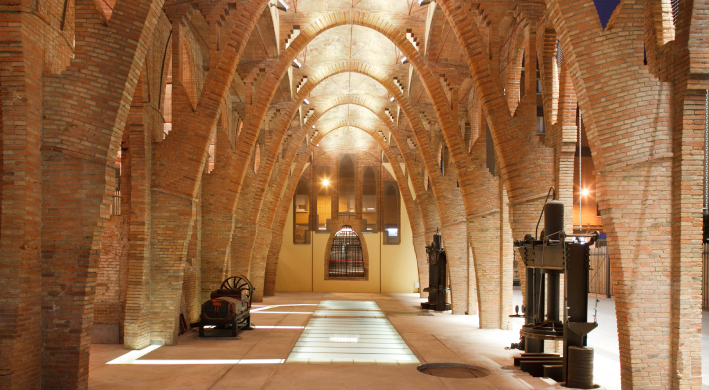The Cooperative Winery

In 1921 the Sindicato Vitivinícola y Caja Rural de Sant Medir was founded by 51 local wine growers. The main objective of this cooperative was to make wine together to get more out of work and production.
With the constitution of the cooperative, the construction of a cooperative winery was promoted to carry out the vinification and to preserve the wine until its sale.
The project was entrusted to César Martinell, an architect specialized in agrarian architecture of the time, whose work unites Gaudi's modernism and noucentista rationalism and integrates the most advanced oenological knowledge of the moment. The result was an impressive building with catenary arches and brick vaults, which represented the means of life for several generations of the Sant Cugat peasantry.
Beyond the winery as the main emblem of Sant Cugat of wine, the city has testimonies of the agricultural past of the city, where the tradition of the vineyard and wine has left an important mark. This tradition takes root in the Roman world, when it is already documented in sites such as the town of Can Cabassa, and gains strength in the medieval world, where the same monastery promotes the cultivation of vineyards and the marketing of wine. But it will be in the eighteenth and nineteenth centuries when a strong specialization in winemaking becomes an engine of change and expansion. The current image of the city, the houses with wineries, the farmhouses and the Arpí Pottery bear witness to this moment. The Cooperative Winery, the most emblematic building of this tradition, also represents the final point as the last witness to the wine-making past.